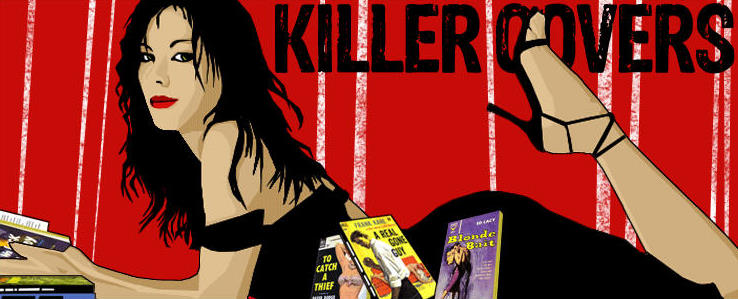
I’ve had the opportunity over my years as a journalist and book critic to interview a great many people. They’ve ranged from relative unknowns to prominent figures such as actor
James Garner,
Doonesbury cartoonist Garry Trudeau,
Washington Post editor Ben Bradlee, jazz singer Sarah Vaughn, and architect-futurist Buckminster Fuller, as well as crime novelists on the order of
Ross Macdonald,
Robert B. Parker,
Elmore Leonard, and
Philip Kerr.
Not all encounters of this sort have gone smoothly, and scheduling difficulties have sometimes arisen. However, I don’t recall ever being so challenged in seeking to

arrange an interview as I was when I tried to connect with Salt Lake City-area artist-illustrator Paul Mann (shown at right).
You may recognize Mann’s moniker from
an article I posted last week about his work on the front of
Too Many Bullets, the new, 19th Nate Heller private-eye novel by
Max Allan Collins. Over the last half-dozen years, Mann has become a regular contributor to publisher
Hard Case Crime’s cracking line of hard-boiled yarns. His mastery of retro-style imagery has made him a go-to HCC cover artist, along with
Robert McGinnis,
Ron Lesser, Claudia Caranfa, Mark Eastbrook, Laurel Blechman, and others. Having long been interested in book illustration, I wished to ask him about his four decades spent perfecting his craft, his creative techniques, his favorite book covers, his Hard Case assignments, and his
extensive portfolio of cinema-related spec pieces.
When repeated efforts to make contact via e-mail failed, I asked Hard Case editor
Charles Ardai for help in reaching Mann. Ardai said he was happy to pass along my message “with a note encouraging him to reply to you. He still might not—he’s a very nice fellow, but may not like doing interviews or might just be dealing with a lot of other commitments. But I’m glad to give it a try.”
In the end, I never heard so much as a whisper from Mann.
So I moved on. There were other people to speak with, other artists to showcase in Killer Covers, other book reviews to write. But recently Ardai mentioned on the social networking service formerly known as Twitter (sorry, I’m never going to call it “X”—that’s just too moronic a name) that Hard Case is planning next year to issue a trade paperback version of
Lemons Never Lie, a 1971 novel that
Donald E. Westlake released under his pseudonym Richard Stark. In 2006 HCC had published
Lemons in mass-market size (with cover art by
Richard B. Farrell), but copies of that ran out long ago, and as Ardai explained, Westlake’s widow “agreed we should reprint in the larger format to match all our recent editions of Don’s books.” Said forthcoming reprint will boast a new and captivating cover—exhibited atop this post—by none other than Paul Mann.
That finally kicked it over the edge. I was going to have to go ahead and exhibit Mann’s remarkable talents on this page without interviewing the man himself. Below you’ll find what I believe is his entire Hard Case oeuvre—so far. Among the titles are several by Westlake, including
Forever and a Death (2017), which is said to have started out as a James Bond film treatment; Collins’ 18th Nate Heller historical tale,
The Big Bundle (2022); Ardai’s
Death Comes Too Late, a short-story collection due out in March of next year; and a 2019 illustrated edition of Stephen King’s
The Colorado Kid (originally published in 2005 with a
cover by Glen Orbik).
I look forward to seeing many more of Mann’s sexy, traditionally fashioned Hard Case Crime fronts in the near future.










































































